Five
THE POLICE FORCE

NEW YORK POLICE OFFICERS. The New York Police Department (NYPD) was the largest force in the country, and other big-city departments patterned many of their investigative procedures on its detective force.

AN OFFICIAL VISIT TO A POLICE STATION. The police commissioner and senior police officials are on an official visit to a police station in this c. 1918 photograph.

TRAINING NYPD RECRUITS. This class for training new policemen was photographed in 1912. The instruction for night patrol is still visible on the blackboard.

THE CRIME LABORATORY. The value of scrutinizing evidence with the aid of science has been an important part of police operations from even the earliest years of the 20th century. In this photograph of an NYPD crime laboratory, the caged rabbit and the array of chemicals in bottles attract immediate attention.

THE MAP ROOM. Following the enlargement of New York City in 1898, in which Manhattan was joined by the outlying areas of Brooklyn, Staten Island, the Bronx, and Queens, the police also needed to increase both the size of its force and the range of its activities and outlook.

A POLICE LIEUTENANT. Honor, duty, trustworthiness, and courage were expected of all policemen, and lieutenants, such as this man, were among the officers expected to demonstrate these virtues at all times.
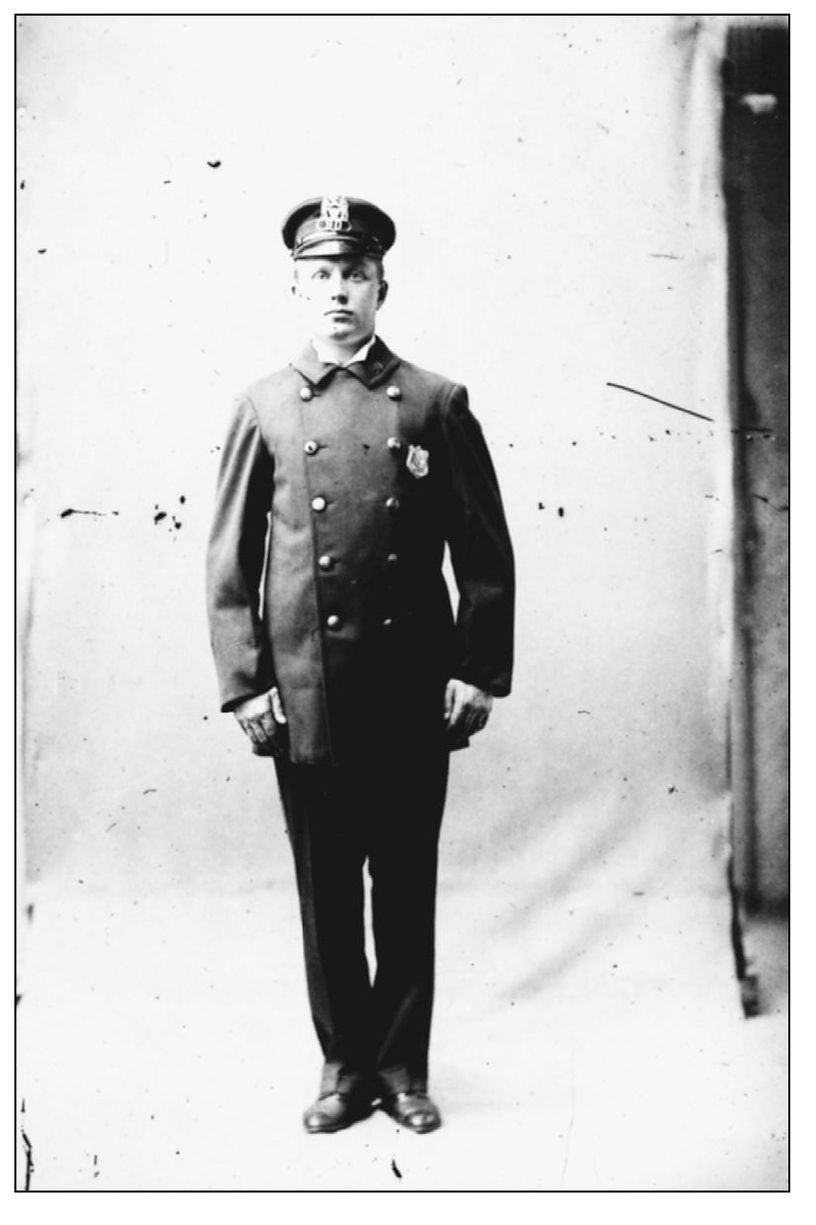
A YOUNG PATROLMAN. This 1920s police officer was among the many young men who probably joined the force as a career. During that decade, the police force rose from 10,000 officers in 1920 to 18,000 in 1929.

THE POLYGRAPH TEST OR “LIE DETECTOR.” This suspect is undergoing one of the latest technological advances of the period, a lie detection test. Despite its fame, the lie detector was soon proved not altogether reliable.
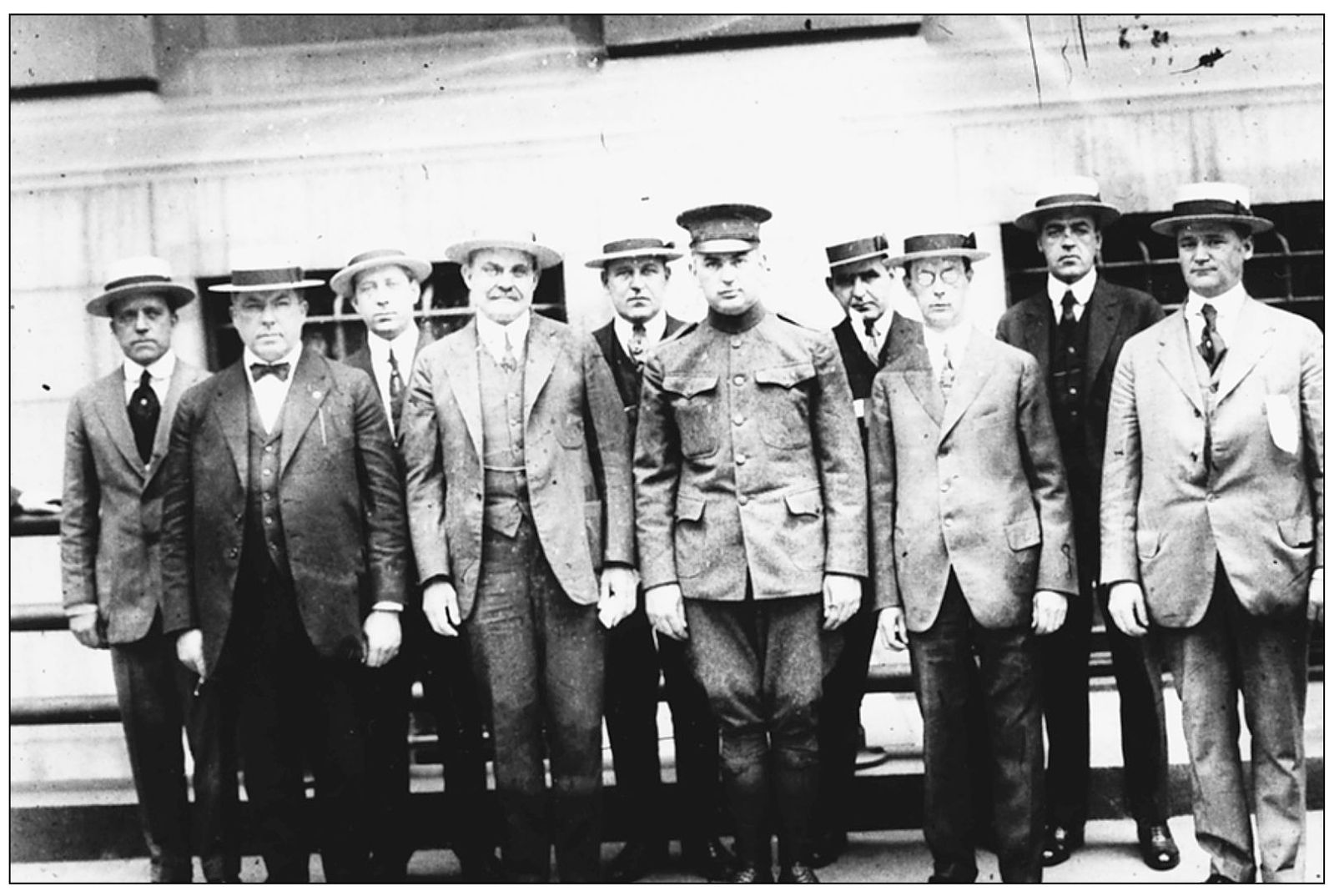
NEW YORK POLICE DETECTIVES. These 1920s NYPD detectives were photographed in front of police headquarters in Centre Street.
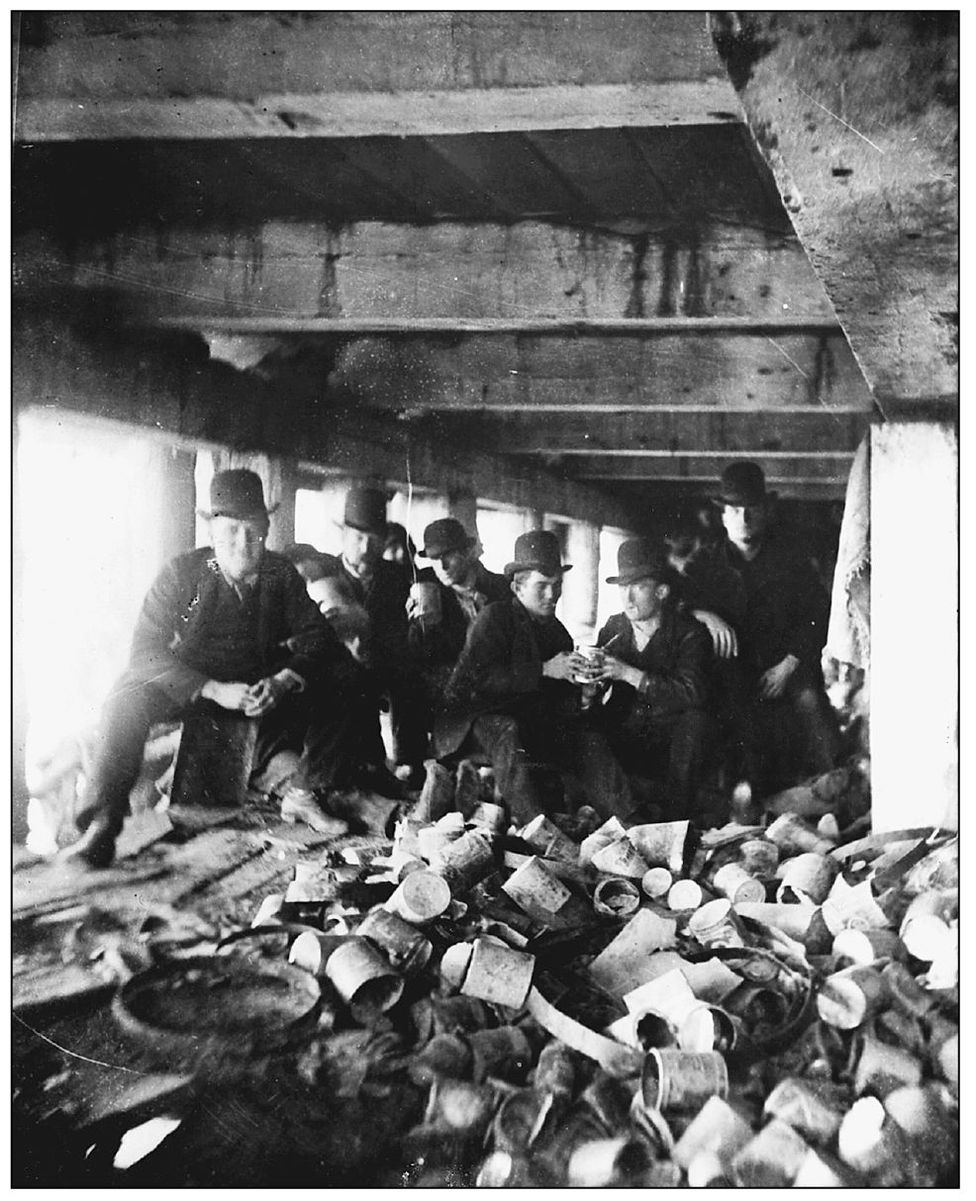
THE SHORT TAIL GANG. Crime lurked in many places in Manhattan. This 1889 picture shows members of the notorious Short Tail Gang in one of their hideouts (at Corlears’ Hook). Thugs such as these plagued the city slums and gave the police much trouble. (Jacob Riis photograph, Museum of the City of New York.)

BANDIT’S ROOST. Jacob Riis took this now classic crime picture about the year 1888. The picture was at 39½ Mulberry Street, which is now a part of Chinatown.

MUG SHOTS. The NYPD kept vast files on criminals. This selection of criminal mug shots shows five rows of pictures of five known criminals. Photography had been introduced in the 19th century, and the police soon adopted a policy of photographing within a few hours all persons that had been placed under arrest.

MUG SHOT OF A DELINQUENT. The invention of photography was a major advance in crime detection. Poverty and lack of education and care often explained the great number of young delinquents that roamed the streets of the city in the early years of the 20th century. Many were foreign born and had emigrated from Europe. Among them were these future gangsters: Owen “Owney” Madden (Irish), Charles “Lucky” Luciano (Italian), and Meyer Lansky (Jewish). Each of these men had entered the country through Ellis Island.

IDENTITY PARADE OR “THE LINEUP.” In the tradition of London’s Scotland Yard, the NYPD carried out identification parades of suspects and innocent civilians. Note that the men gathered to select a criminal wear black masks over their faces as a means of not being identified themselves.

THE STATION HOUSE DESK SERGEANT. This was the common way police station lobbies looked in the old days. Uniformed officials (or servants) called doormen aided the regular desk sergeants and other policemen assigned to man the desk.
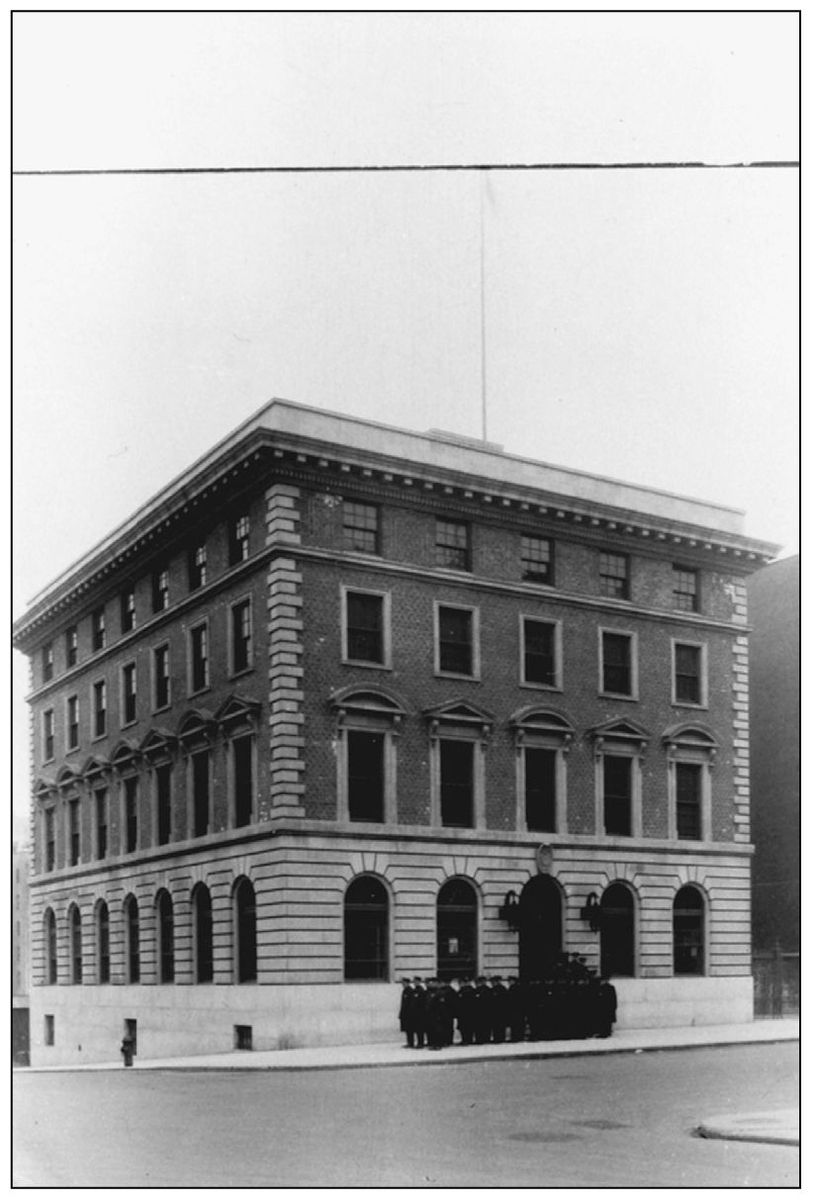
POLICE STATION. The police officers are lined up outside of their precinct station house in the 1920s.

POLICE STATION IN WINTER. Police stations in New York were usually not constructed for the purpose but were merely purchased as the need arose. A good example of this is this police station, which once upon a time might have been a private house.
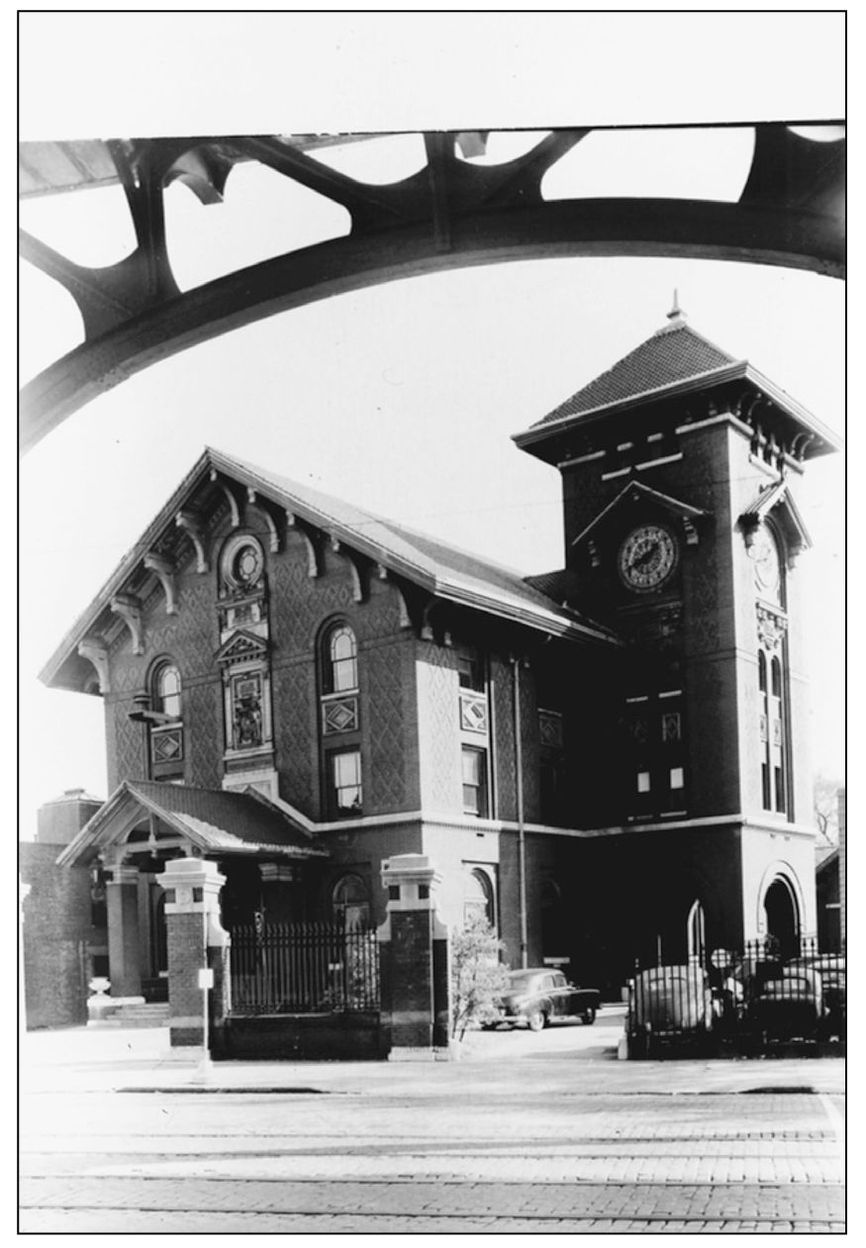
THE 52ND PRECINCT. This precinct station house was located at Webster Avenue in the Bronx. Until 1906, it was known as the 41st precinct. The architectural firm of Stoughton and Stoughton designed it.


STATION HOUSES. Here are two other police buildings, both of which are attractive yet exhibit striking dissimilarities of style.


MORE POLICE STATIONS. The demand for a greater number of policemen during the 1920s and 1930s, a period when criminal activities had increased enormously, also required the purchase and construction of more station houses. Unlike many of the earlier structures, the building on the right was planned and constructed as a police station.


NEW YORK HARBOR POLICE. This was one of several boats operated by the harbor police. During the Roaring Twenties, the harbor police had its hands filled with rumrunners and retrieving the corpses of murder victims who had been dropped into the waters by gangsters and other hoodlums.

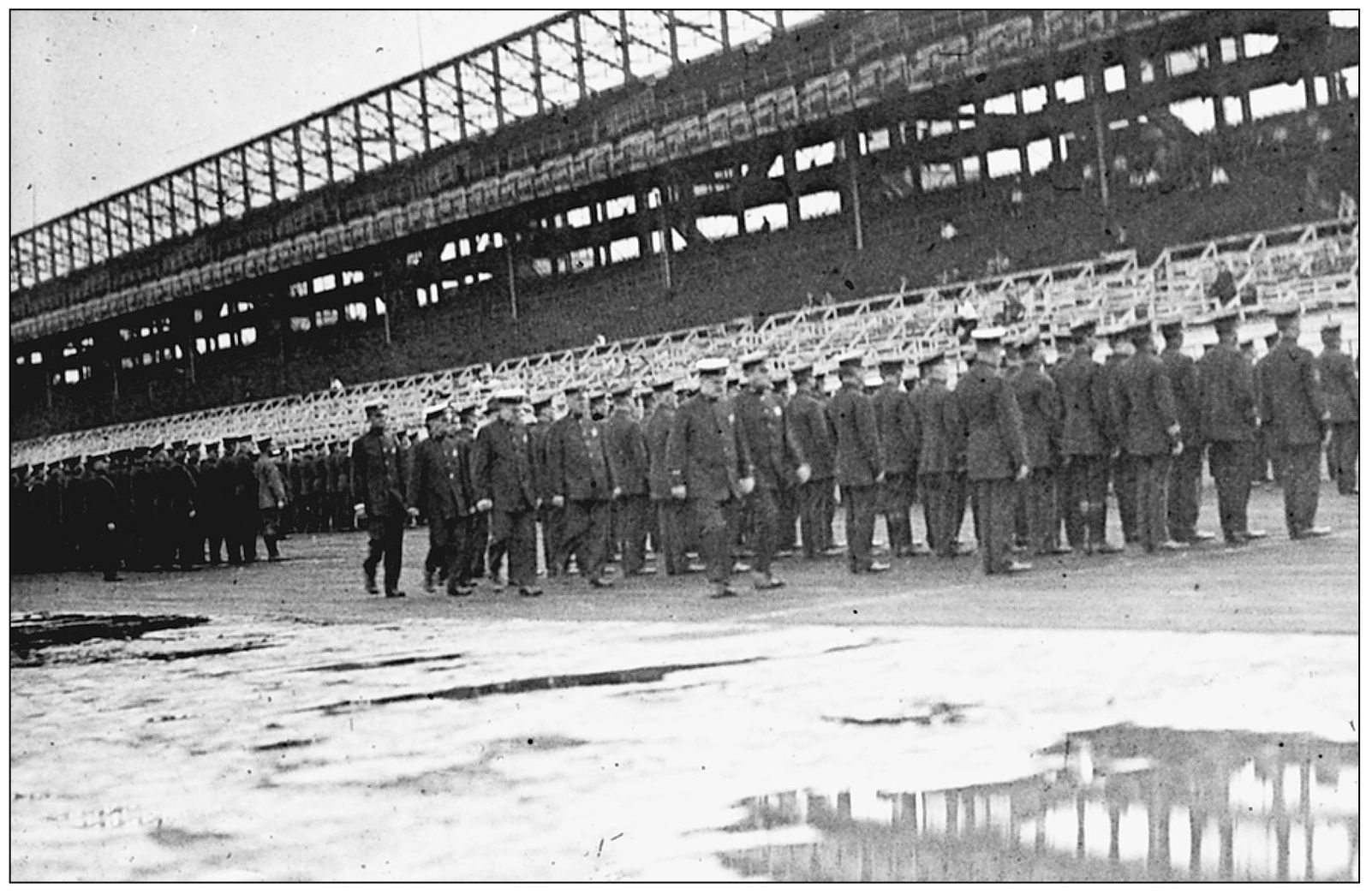
POLICE EVENT AND POLICE CAMP. These pictures show two of the outdoor events that the police engaged in during the 1918–1920s period.


POLICE ASSEMBLY. This picture was taken inside of one of the police buildings. The police always would muster for deployment on major public occasions such as political conventions, parades, and demonstrations.
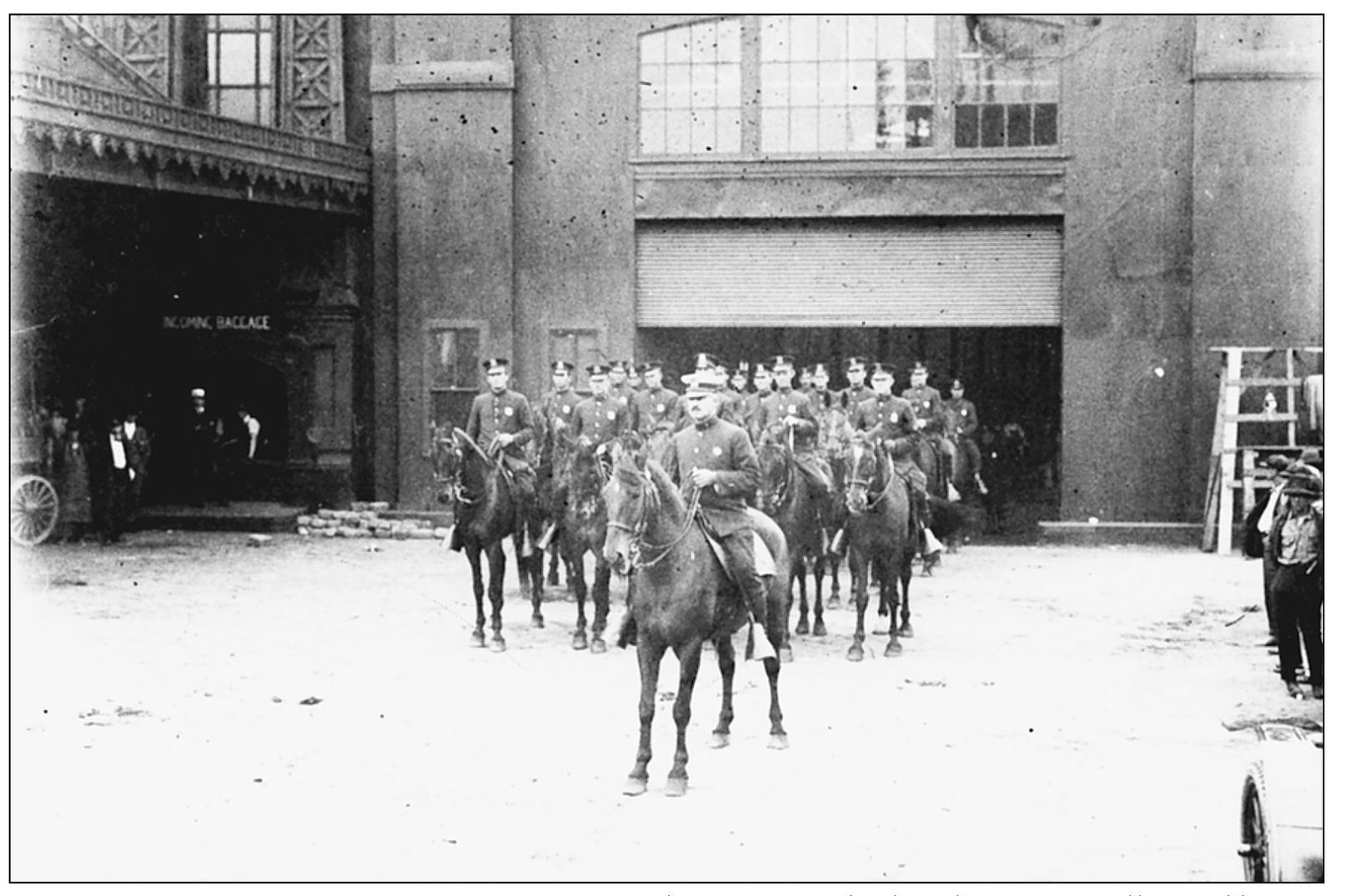
MOUNTED POLICEMEN. In spite of its use of modern motor vehicles, the NYPD still found horses useful in its work.

HORSE PATROLS. Mounted officers patrolled many parts of Manhattan, including Central Park (below).


TRAINING IN CENTRE STREET. These young men are taking instructions from a police officer about motorcar identifications in front of police headquarters in Centre Street, lower Manhattan. The year is about 1920, and the car they are inspecting is a 1918 Ford Run-a-Bout.

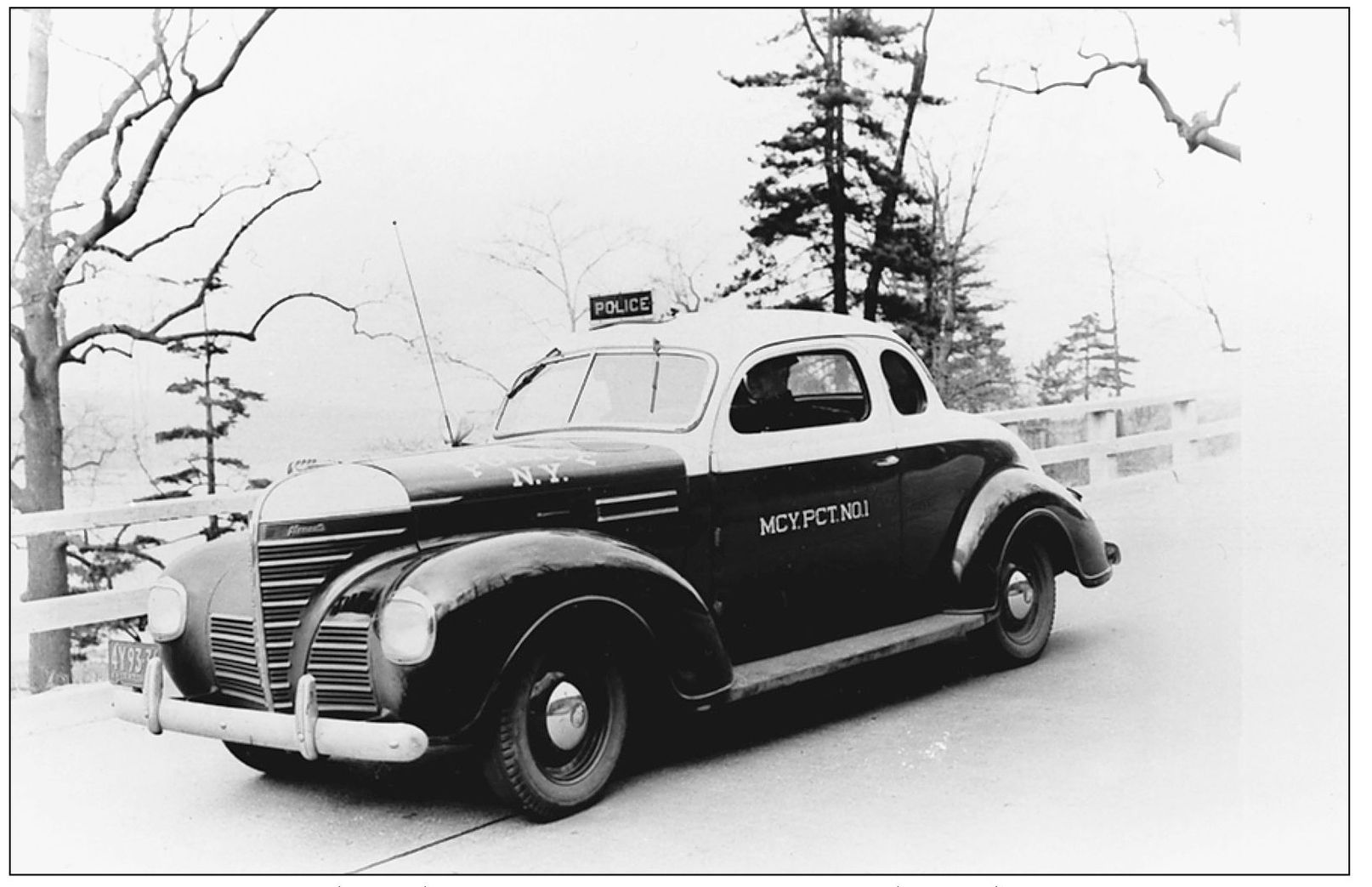
POLICE CAR, 1930S. This police car from Precinct No. 1 is a Plymouth.

POLICE CAR, 1940S. For many years, Plymouths were standard NYPD vehicles.

POLICE BILLBOARD NOTICE. Police commissioner Arthur Woods put up these notices to promote the department’s safety booklet. The advertisement below was posted at Fifth Avenue and 42nd Street.
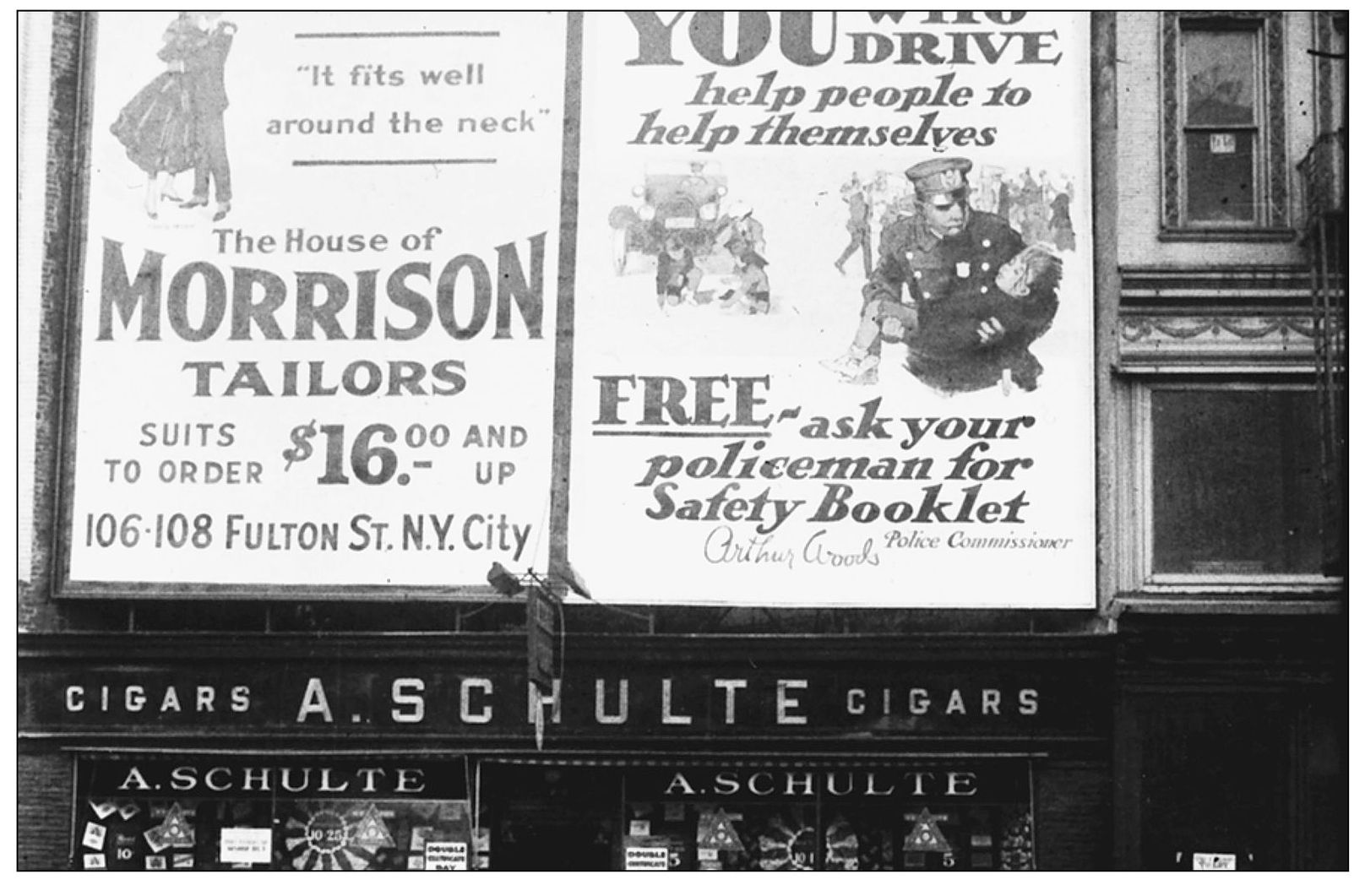
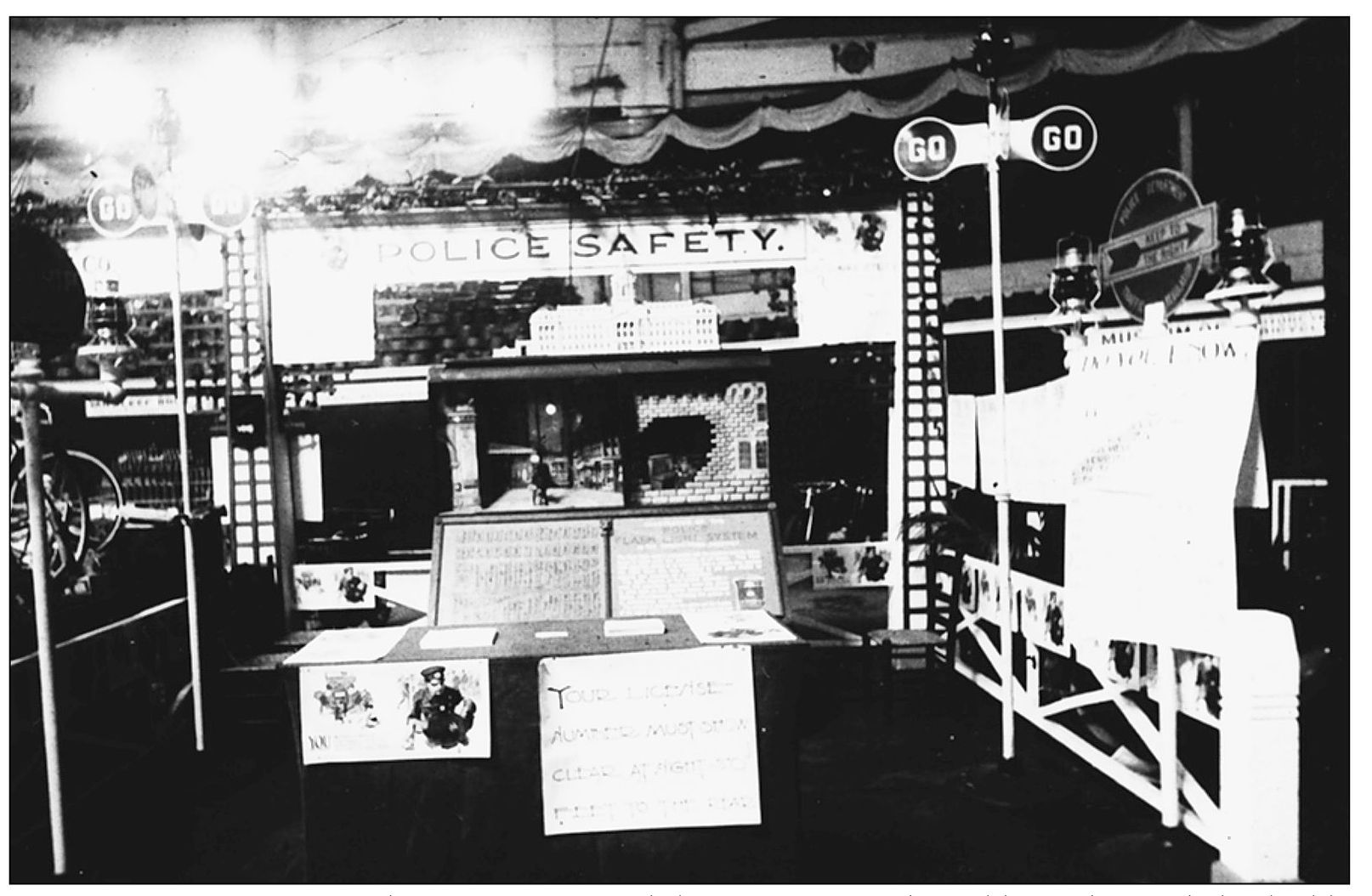
SAFE DRIVING EXHIBIT. This traffic safety exhibit was open to the public and provided valuable information on police policy, especially in respect to traffic and motoring. Among the exhibits here, one explains the requirement for license plates on cars to be visible within a distance of 50 feet, and another explains the police flashlight system.

SMASHED CAR. This picture of a smashed car and a crowd of onlookers was taken on the same day and near the same phonograph shop selling Victor talking machines (Victrolas) as shown on page 39.
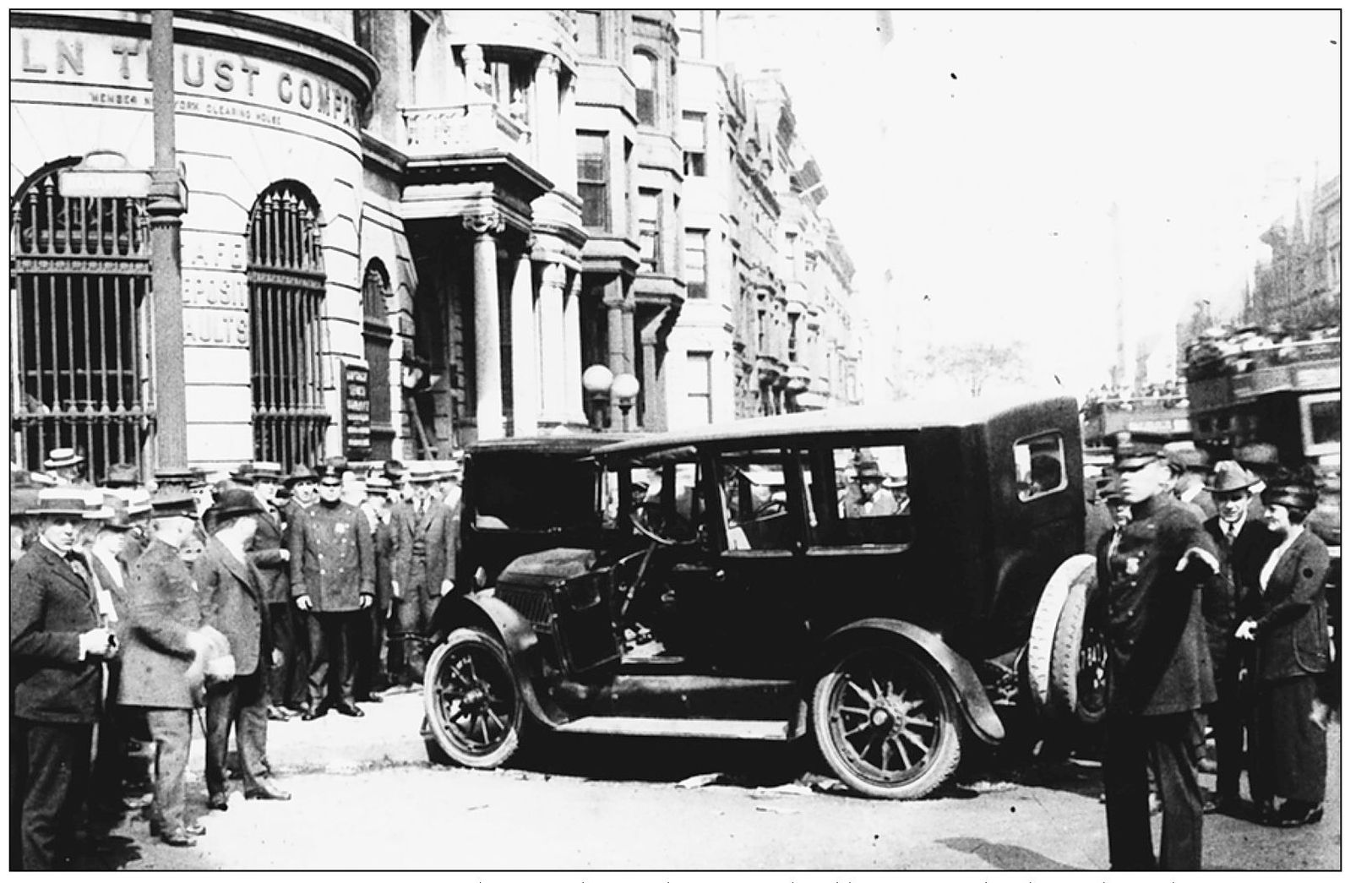
AUTOMOBILE ACCIDENTS. As can be seen here, three cars had been smashed up when these pictures were taken. The accident shown in the photograph below took place at West 72nd Street.

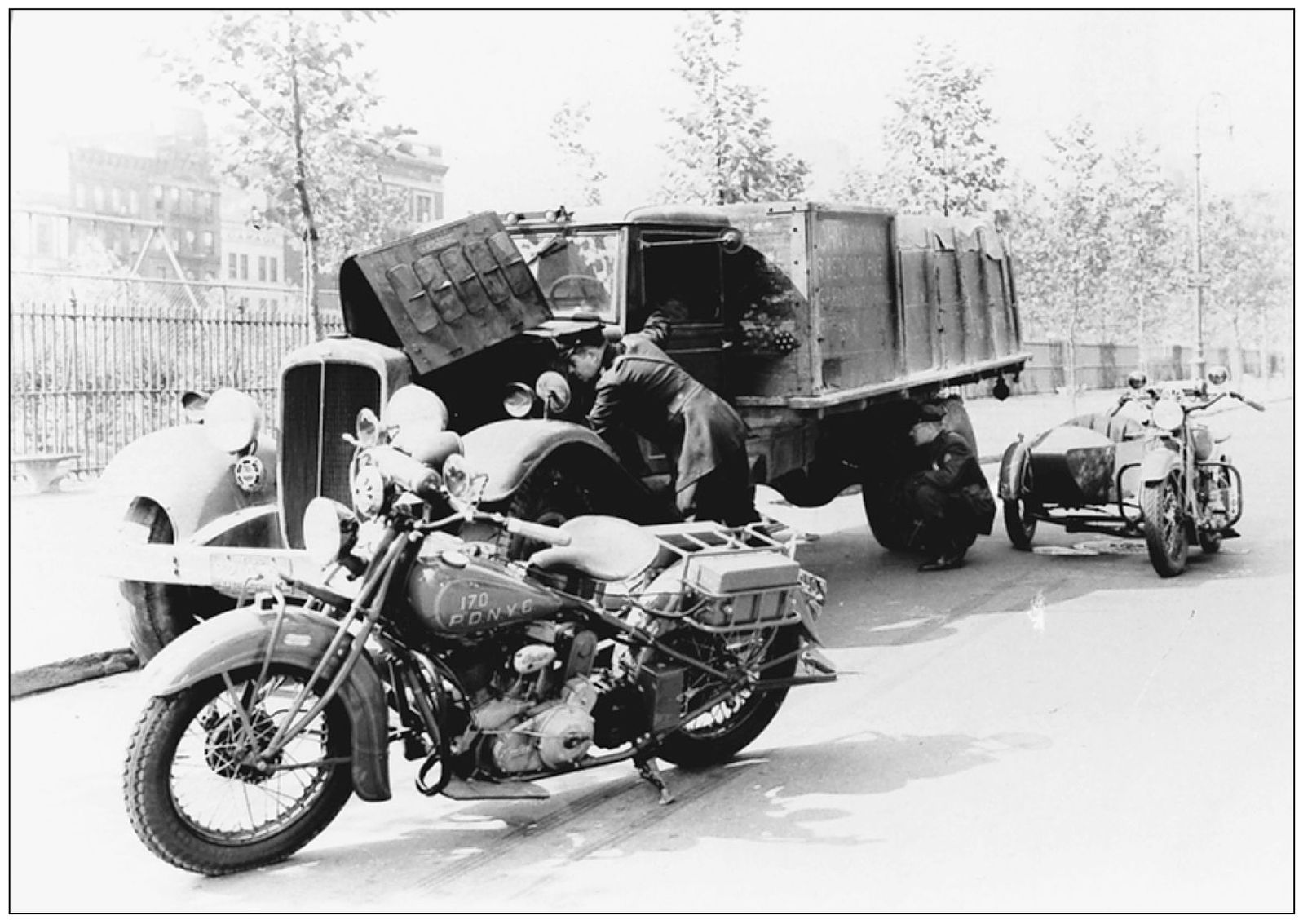
MOTORCYCLE POLICE. A motorcycle policeman examines the motor of a truck around 1940. The motorcycle is a 1938 or 1939 Indian Scout.

THE NEW YORK FIRE DEPARTMENT AND SAFETY. Firemen work on a hazardous structure in the 1920s.

TEACHING SCHOOLCHILDREN. City police officers regularly provided safety instructions to schoolchildren. The danger of motor vehicles and traffic were major problems in the early days of motoring. The traffic officers and patrolmen on the beat came to know the schools, teachers, children, and residents of the neighborhood to which they were assigned.


NEW YORK CITY’S WOMEN POLICE. Pictured here in front of police headquarters on Centre Street are members of the Women’s Police Reserve’s Theatrical Unit. The policewomen are showing how one of their stretchers was used. Their task was to secure women who had been arrested in theater raids. Theaters presenting plays or performances deemed immoral were commonly raided during the Roaring Twenties. In 1926, actress Mae West was arrested for an off-color play and then imprisoned at Welfare Island.

POLICEWOMEN. The earliest women police were engaged (1891), and they were called matrons and took care of female detainees. In 1918, the NYPD hired its first policewomen.

WOMAN POLICE SUPERVISOR. This woman supervisor held a rank similar to an army corporal; in this way, although senior to the other women, she still was of a lesser rank than a male police sergeant.

TRAFFIC POLICEMAN. African American policemen were usually assigned to black neighborhoods such as Harlem. This ethnic policy in policing was applied to all major ethnic communities. For instance, Italian American policemen worked in Little Italy and East Harlem, and Jewish American officers patrolled the Jewish Lower East Side. This photograph was taken at 135th Street and Lenox Avenue in 1927.

TWO POLICEWOMEN. On the left is probably an undercover policewoman, and below is an equestrian policewoman.
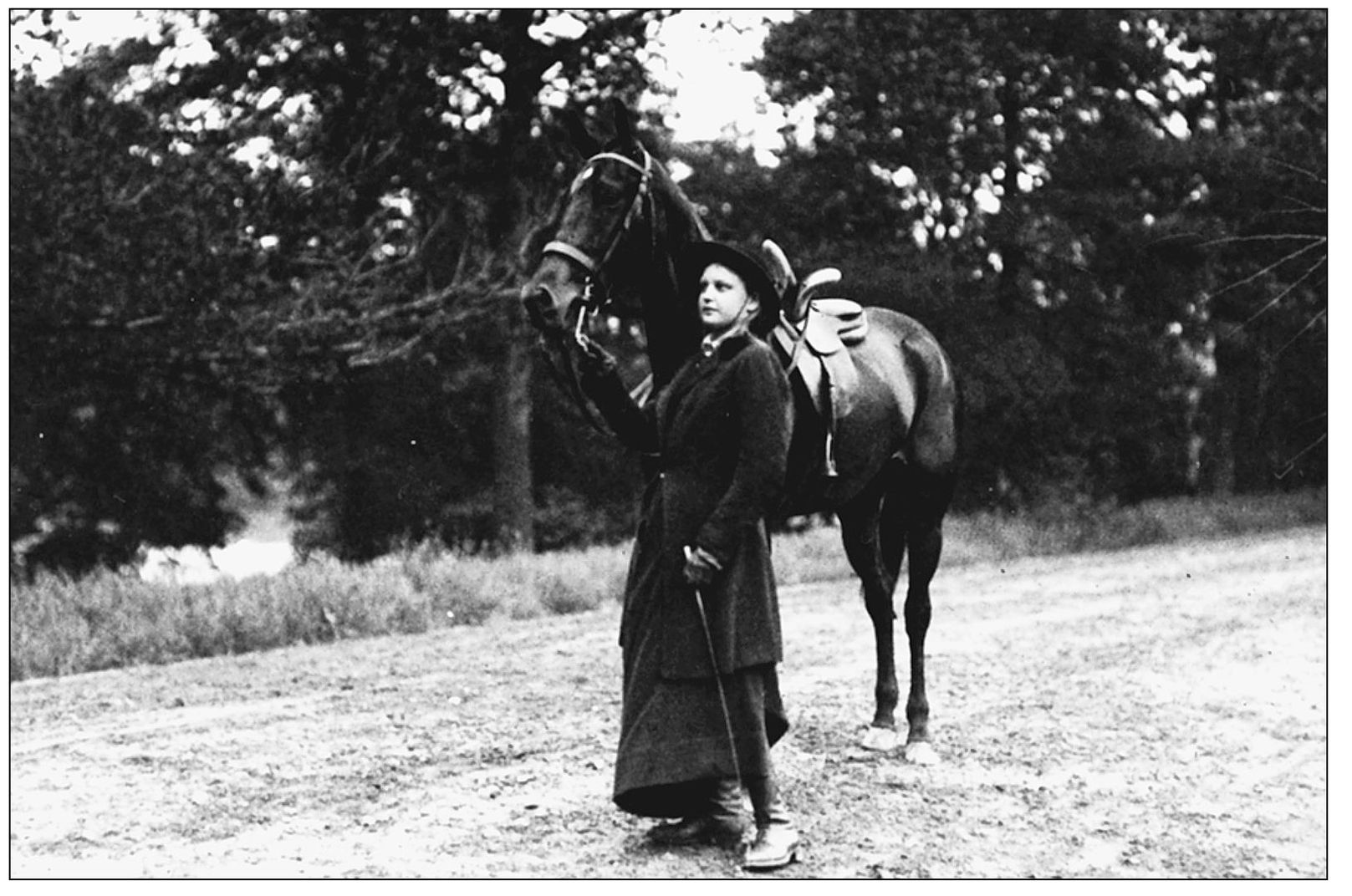
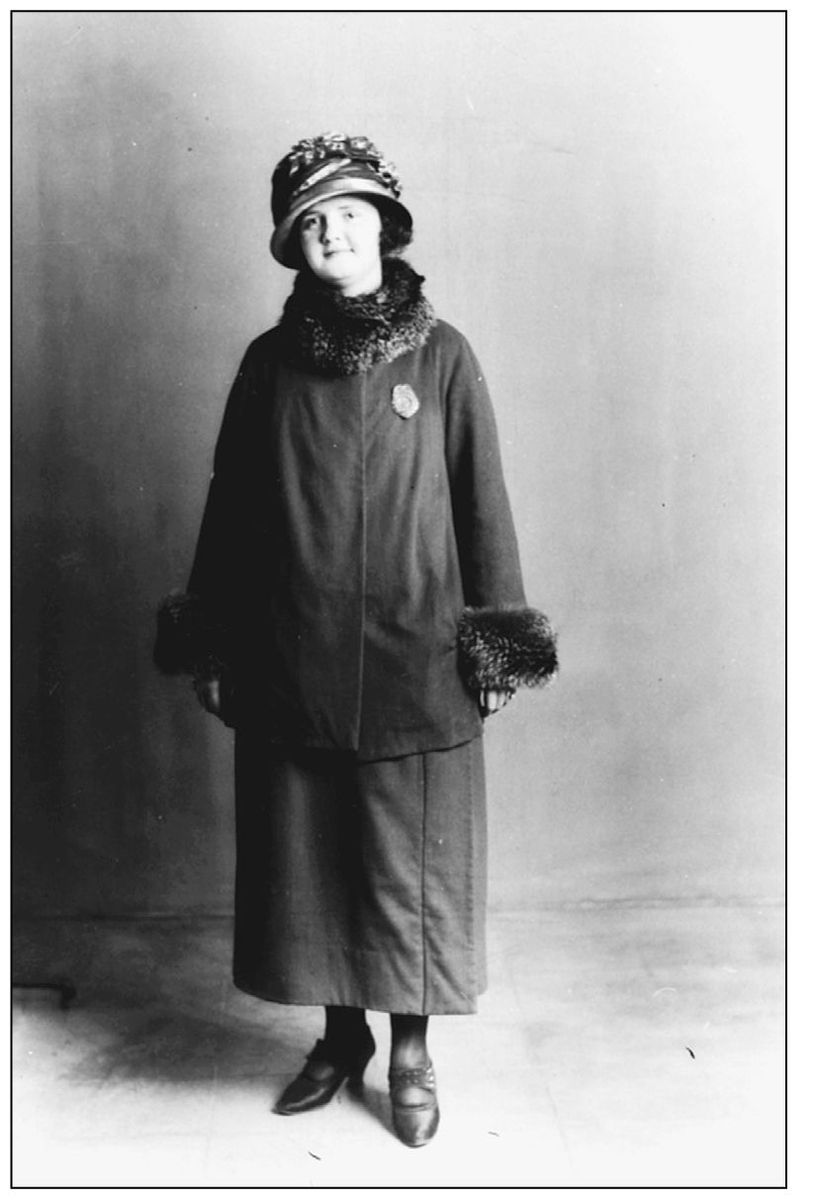
POLICEWOMEN AND FASHION. Although wearing badges, these two policewomen of the 1920s are dressed in “plain street clothes.”
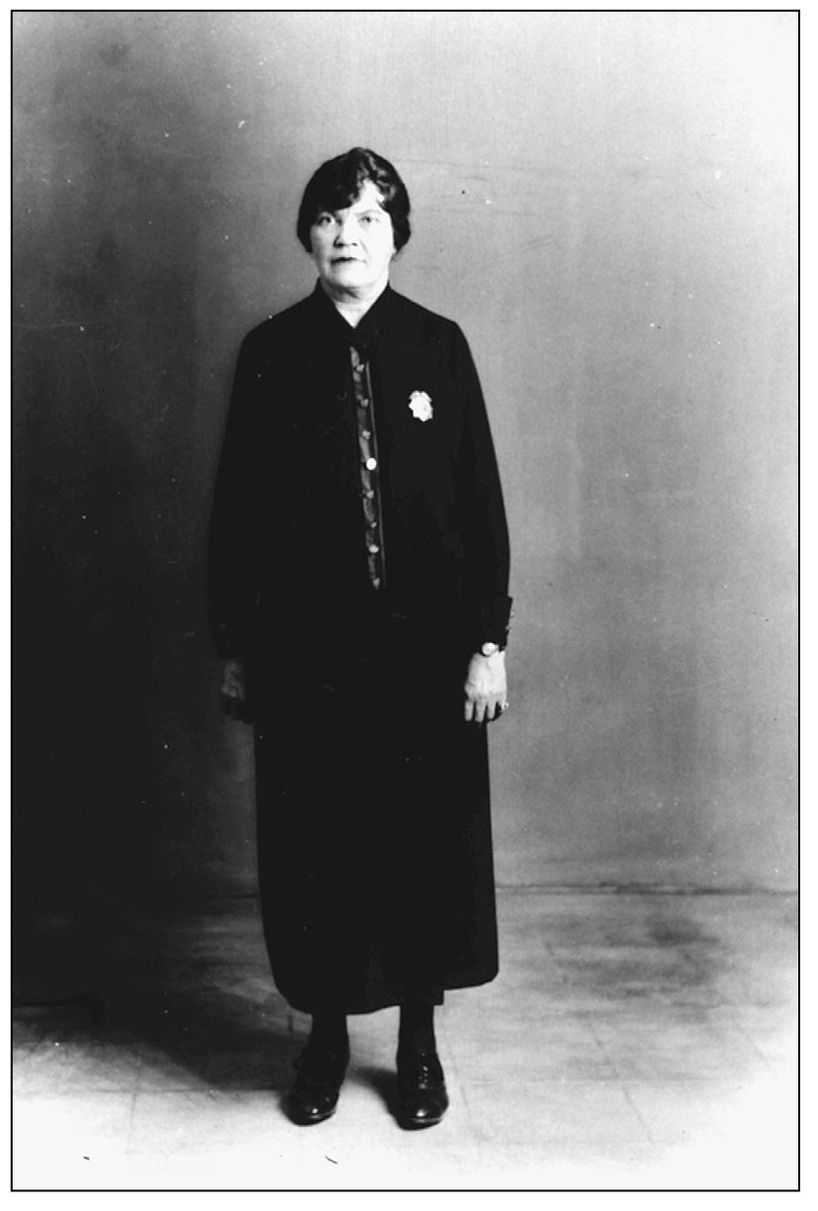

NEW NYPD PATROL CAR. This group of policemen shows off a new Buick patrol car in 1926.

WOMEN’S POLICE PADDY WAGON OF THE 1920S. Standing in front of police headquarters downtown is an ambulance that was assigned to the Women’s Police Reserve of the Lafayette Battalion.